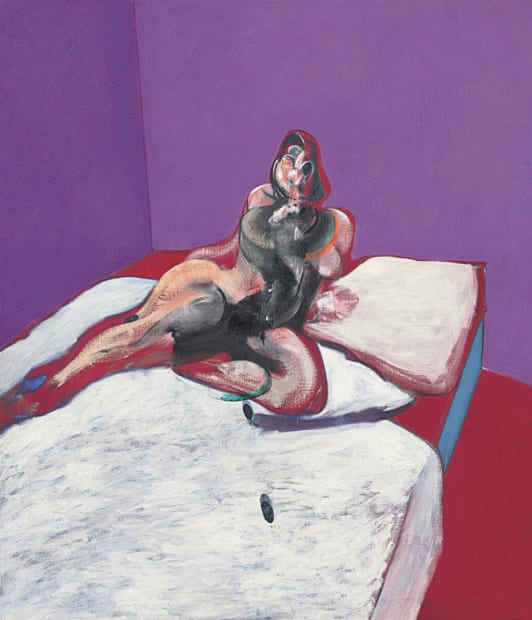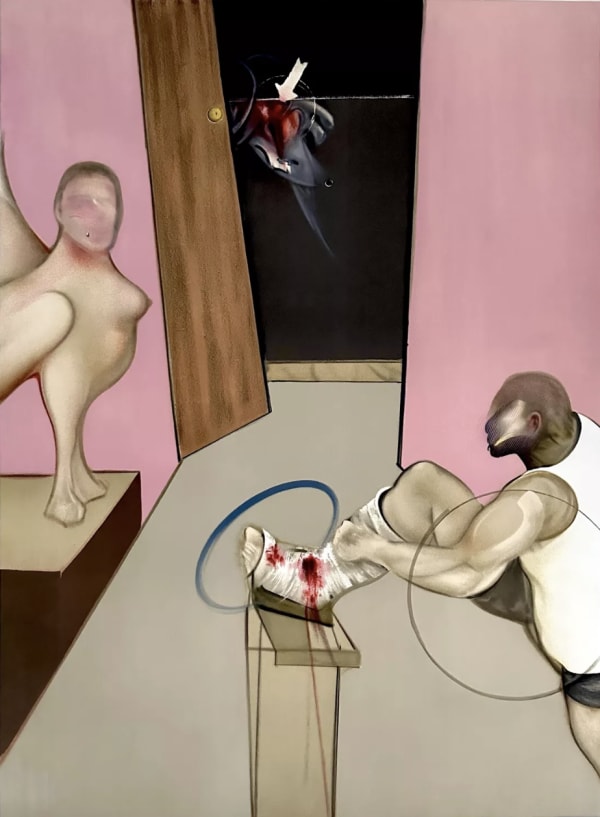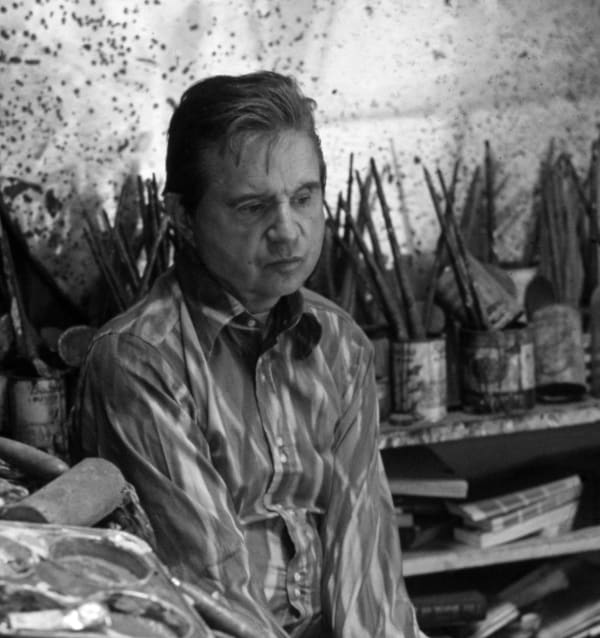-

Portrait of Henrietta Moraes, 1963
Oil on canvas, 165.1 x 142.2cm
©The Estate of Francis Bacon, Image reproduced for informational purposes only
-
You could say that I have no inspiration, that I only need to paint.
- Francis Bacon
The colour choices are central to the painting’s power. The purples and pinks feel almost too intimate, evoking the fragility of exposed flesh and the emotional charge of Bacon’s connection to his subject. Rather than beautifying the figure, the tones expose her vulnerability, transforming the portrait into something visceral and psychological. Through this controlled chaos of colour, Bacon captures not just Moraes’s physicality but the pulse of human existence itself, restless, tender and on the brink of collapse.



